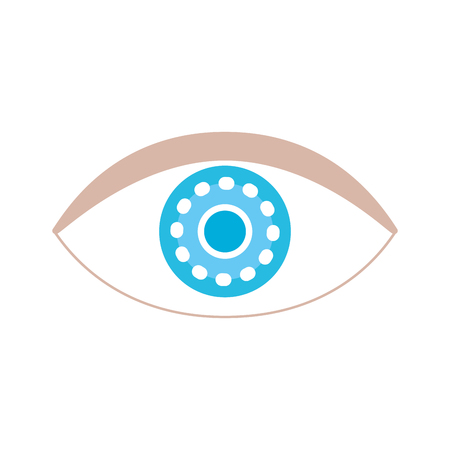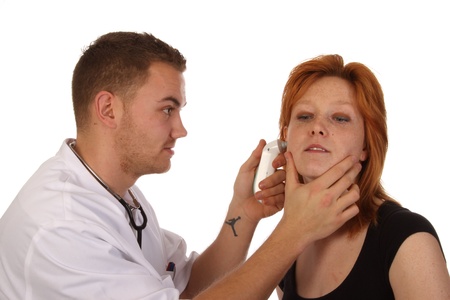Introduction to Ethnic Skin in UK Aesthetic Practice
The landscape of aesthetic medicine in the United Kingdom is evolving rapidly, reflecting the nation’s rich multicultural fabric. With people of diverse backgrounds calling the UK home, aesthetic clinics increasingly encounter a wide spectrum of skin types and tones. This diversity is not simply cosmetic; it represents a complex interplay of genetic heritage and cultural identity that significantly influences how individuals respond to aesthetic procedures and how they should be cared for after treatment. Recognising these differences is not just about achieving optimal results but also about ensuring safety, satisfaction, and cultural sensitivity in patient care. As more patients from varied ethnic groups seek non-surgical and minimally invasive treatments, practitioners must appreciate the unique characteristics of ethnic skin—ranging from increased melanin content to specific tendencies such as hyperpigmentation or keloid formation. Moreover, understanding cultural attitudes towards beauty, healing practices, and skincare routines is crucial for building trust and delivering personalised post-procedure support. By integrating both genetic considerations and cultural context into aftercare protocols, UK aesthetic clinics can provide truly tailored experiences that respect individual backgrounds while maximising procedural outcomes.
Genetic Differences and Skin Response
Genetic variations among different ethnic groups play a pivotal role in determining how skin responds to aesthetic procedures. Understanding these genetic differences is essential for clinicians in the UK aiming to provide tailored post-procedure care, especially within the multicultural context of British society.
How Genetics Influence Healing and Pigmentation
Skin healing and pigmentation are significantly influenced by genetics. For instance, individuals with higher Fitzpatrick skin types—commonly found in African, South Asian, and Middle Eastern populations—tend to have more active melanocytes. This increased melanin activity can make these skin types more susceptible to post-inflammatory hyperpigmentation (PIH) following aesthetic interventions such as laser treatments or chemical peels.
| Ethnic Group | Common Fitzpatrick Type | Healing Characteristics | Pigmentation Risk |
|---|---|---|---|
| Caucasian (White British/European) | I-III | Faster re-epithelialisation, lower risk of keloids | Lower risk of PIH |
| African/Caribbean | V-VI | Slower healing, higher keloid risk | High risk of PIH |
| South Asian (Indian, Pakistani, Bangladeshi) | IV-V | Moderate healing speed, moderate keloid risk | Moderate-high risk of PIH |
| East Asian (Chinese, Japanese) | III-IV | Sensitive to certain procedures, low keloid risk | Moderate risk of PIH |
| Mediterranean/Middle Eastern | IV-V | Variable healing speed, moderate keloid risk | High risk of PIH |
Sensitivity to Aesthetic Procedures
Certain genetic traits can also affect how sensitive the skin is to specific treatments. For example, some ethnic groups may be more prone to adverse reactions like prolonged erythema or scarring after laser therapy due to differences in collagen structure or inflammatory response. Recognising these variations allows practitioners to select safer modalities and adjust energy settings appropriately.
The Importance of Personalised Assessment in British Clinics
The diversity seen across the UK’s population necessitates a thorough understanding of each patient’s genetic background during consultation and treatment planning. By integrating knowledge of genetic predispositions into post-procedure care protocols, clinics can minimise complications and optimise outcomes for all ethnicities represented in their patient base.

3. Cultural Considerations in Aftercare
Within the diverse landscape of British aesthetic clinics, recognising and respecting cultural beliefs and practices is central to delivering effective post-procedure care for patients with ethnic skin. Cultural backgrounds strongly shape individual attitudes towards skincare routines, perceptions of beauty, and expectations from cosmetic treatments. Many patients follow traditional rituals—such as oil massages, herbal applications, or specific cleansing practices—that may interact with prescribed aftercare protocols. Understanding these rituals allows clinicians to offer tailored guidance that honours cultural values while optimising clinical outcomes.
Language preferences also play a pivotal role in ensuring adherence to aftercare instructions. In a multicultural society like the UK, providing written and verbal post-procedure advice in a patient’s preferred language can significantly improve understanding and compliance. Clinics should consider employing multilingual staff or offering translated materials to bridge communication gaps, thereby enhancing patient satisfaction and safety.
Cultural attitudes towards visible signs of healing—such as redness or swelling—can further influence patient comfort levels and willingness to engage in social activities post-treatment. Sensitivity to these concerns enables practitioners to offer anticipatory guidance that aligns with cultural norms and expectations. By integrating cultural awareness into every stage of the aftercare process, aesthetic clinics can foster trust, strengthen therapeutic relationships, and ultimately support better long-term results for patients from all ethnic backgrounds.
4. Personalising Post-Procedure Protocols
Adapting post-procedure care for patients with ethnic skin requires a nuanced approach, balancing clinical best practice with an understanding of genetic and cultural considerations. This individualised strategy ensures optimal recovery, minimises complications such as hyperpigmentation or scarring, and enhances patient satisfaction across diverse backgrounds.
Tailoring Aftercare Instructions
Aftercare protocols should be delivered in clear, culturally sensitive language, taking into account the patient’s health literacy and preferred communication style. For instance, some communities may favour verbal instructions, while others benefit from written leaflets or digital follow-ups. Moreover, certain traditional remedies or beliefs about wound healing may influence adherence to medical advice; acknowledging these respectfully can foster trust and compliance.
Customising Skincare Product Recommendations
The choice of skincare products post-procedure must be matched to the unique characteristics of ethnic skin types. For example, patients with higher Fitzpatrick skin types are more prone to post-inflammatory hyperpigmentation (PIH) and may require gentle formulations free from fragrances or harsh actives. Below is a comparison table highlighting considerations for different ethnic groups:
| Ethnic Background | Common Skin Concerns | Recommended Ingredients | Ingredients to Avoid |
|---|---|---|---|
| African/Caribbean | Hyperpigmentation, keloid scarring | Niacinamide, hyaluronic acid, SPF50+ | Hydroquinone (unless prescribed), alcohol-based toners |
| South Asian | PIH, sensitivity | Ceramides, gentle cleansers, mineral sunscreen | Retinoids (immediately post-procedure), strong exfoliants |
| East Asian | Erythema, uneven tone | Centella asiatica, vitamin C (low concentration) | Benzoyl peroxide, high-strength acids |
| Mixed Heritage | Variable: combination of above concerns | Bespoke regimen based on skin assessment | Irritants relevant to individual profile |
Adjusting Follow-up Schedules and Monitoring
Cultural factors may influence patients’ availability or willingness to attend follow-up appointments. Flexible scheduling—including after-hours clinics or telemedicine options—can accommodate work patterns and family commitments common in many UK communities. Additionally, some patients may require more frequent reviews due to a higher risk of PIH or scarring; tailoring the follow-up interval ensures early identification and management of complications.
This highly personalised approach not only supports better clinical outcomes but also demonstrates respect for the individuality of each patient—a cornerstone of quality care in modern British aesthetic practice.
5. Communication and Patient Education
Best Practices for Effective Aftercare Communication
Effective communication is fundamental in ensuring that post-procedure care advice is understood and followed, particularly for patients with diverse genetic backgrounds and cultural identities. In the UK’s multicultural context, practitioners must go beyond simply providing written instructions; they should engage in open dialogue, encourage questions, and tailor their communication styles to the individual’s preferences. This may involve using plain English, avoiding medical jargon, and providing translated materials or interpreter services when required.
Respecting Cultural Sensitivities
Cultural awareness is key to building trust and rapport. Understanding a patient’s beliefs regarding skin health, healing rituals, or cosmetic interventions enables clinicians to frame aftercare advice in a way that aligns with these values. For example, some ethnic communities may use traditional remedies post-procedure; acknowledging this and discussing potential interactions with prescribed treatments demonstrates respect and encourages transparency. Sensitivity towards modesty, gender dynamics, and privacy is also crucial when discussing personal care routines.
Adapting Communication Styles
The UK population exhibits a wide range of preferred communication styles. While some patients may appreciate detailed written instructions to take home, others might benefit more from verbal explanations or visual aids such as diagrams and videos. Clinics should assess each patient’s learning style—whether they are visual, auditory, or kinesthetic learners—and adapt accordingly. Follow-up calls or digital reminders can reinforce aftercare steps, catering to tech-savvy individuals or those who require extra support.
Engaging Family and Support Networks
In many cultures represented across the UK, healthcare decisions are often made collectively within families or community groups. With the patient’s consent, involving trusted family members in aftercare discussions can improve adherence and outcomes. Providing group education sessions or printed materials that can be shared ensures everyone involved is informed about the recovery process and any necessary precautions specific to ethnic skin types.
Continuous Professional Development
A commitment to ongoing education about cultural competence and communication strategies is essential for all clinic staff. Regular training helps ensure that every team member—from receptionists to practitioners—understands how best to support patients from all backgrounds. This fosters an environment where patients feel comfortable expressing concerns or uncertainties about their aftercare journey.
By integrating these best practices into daily operations, UK aesthetic clinics can significantly enhance patient satisfaction and clinical outcomes for individuals with ethnic skin, ensuring truly personalised post-procedure care.
6. Case Studies and Practical Recommendations
Examples from UK Aesthetic Clinics
Across the UK, leading aesthetic clinics have adopted tailored post-procedure care protocols to address the unique needs of ethnic skin. For instance, a central London clinic specialising in chemical peels for Fitzpatrick skin types IV-VI has implemented a bespoke aftercare routine. This includes providing patients with melanin-safe topical agents, scheduling extended follow-up appointments, and offering culturally sensitive advice regarding sun protection and skin barrier repair. These efforts have resulted in higher patient satisfaction and reduced incidence of post-inflammatory hyperpigmentation (PIH).
Actionable Tips for Clinic Teams
1. Conduct Thorough Pre-Treatment Assessments
Assess each patient’s genetic background, cultural practices (such as preferred skincare ingredients or religious considerations regarding certain products), and previous response to treatments. Document these findings to inform individualised aftercare plans.
2. Develop Multilingual and Culturally Relevant Aftercare Materials
Provide written and verbal post-procedure instructions in languages commonly spoken by your patient base, such as Urdu, Punjabi, or Arabic. Incorporate culturally relevant imagery and advice, for example addressing common home remedies or traditional healing methods that may interact with clinical recommendations.
3. Use Evidence-Based Products Suitable for Ethnic Skin
Select aftercare products specifically formulated for darker skin tones—avoid harsh exfoliants and prioritise ingredients that support barrier repair and pigmentation control, such as niacinamide or azelaic acid. Maintain a stock of sample kits for high-risk patients to trial before full use.
4. Schedule Extended Follow-Up and Support
Acknowledge that some complications, like PIH or keloid scarring, may develop later in ethnic skin. Offer longer-term follow-up appointments and establish clear communication channels for patients to report concerns between visits.
5. Continuous Staff Training on Cultural Competence
Invest in regular training sessions for all clinical staff focusing on the genetics of ethnic skin, cultural competence, and unconscious bias in aesthetics. Encourage open dialogue within the team about best practices and lessons learned from past cases.
Conclusion: Setting the Standard for Inclusive Care
By drawing upon real-world examples from UK clinics and implementing these actionable steps, aesthetic teams can significantly improve outcomes for patients with ethnic skin. Personalised post-procedure care that respects genetic variation and cultural context not only reduces complications but also builds trust within diverse communities—setting a new standard for inclusive excellence in British aesthetic medicine.
